If you’ve ever seen a picture of a capybara lounging peacefully with other animals, you might wonder: are they as harmless as they look? Could they actually endanger other animals in their ecosystems? Let’s dig into this, breaking it down in a way that’s easy to understand, engaging, and packed with insights.
What Are Capybaras?
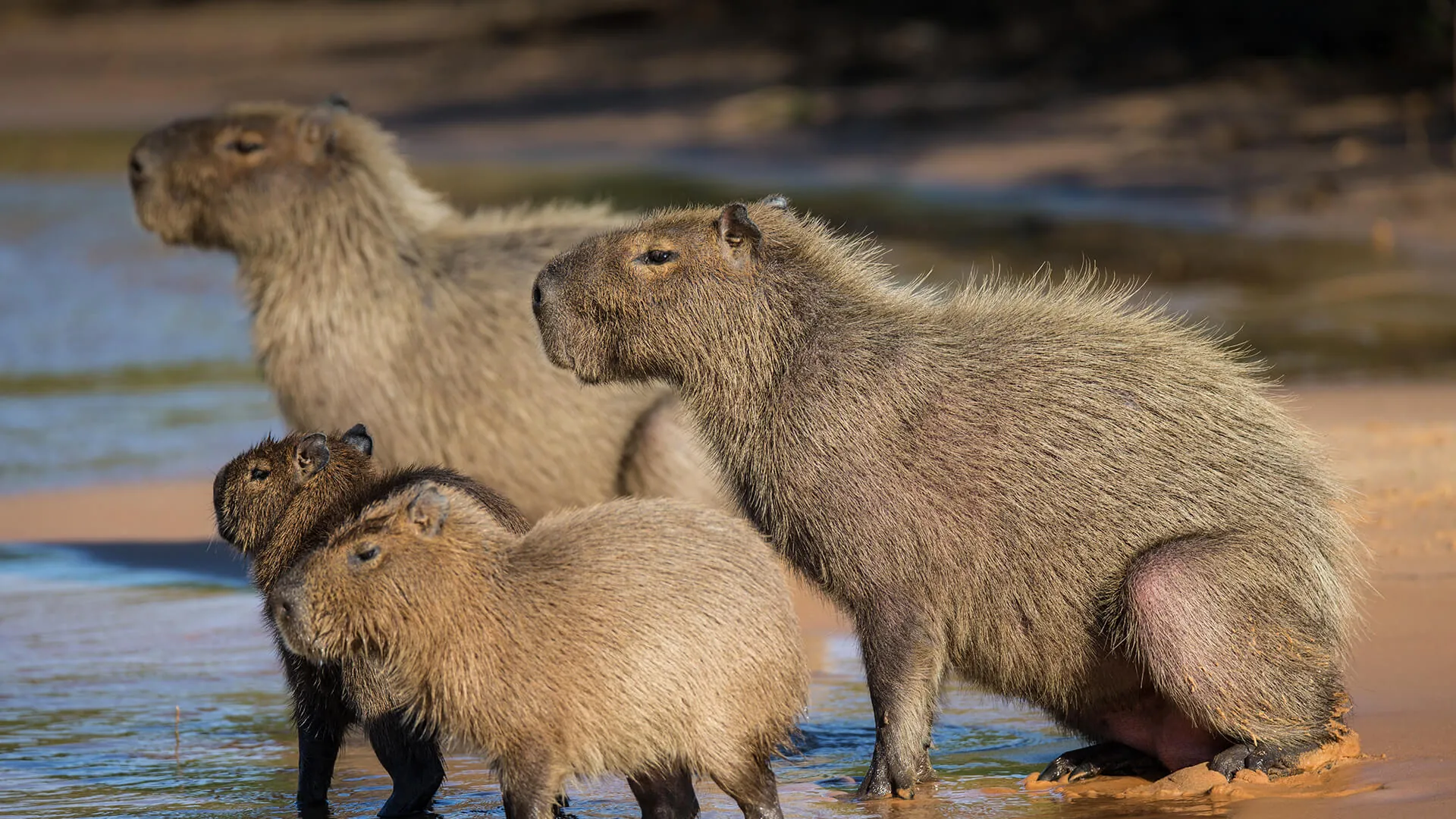
Capybaras (Hydrochoerus hydrochaeris) are the largest rodents on Earth. Native to South America, these adorable, semi-aquatic creatures are social, chill, and surprisingly complex in their relationships with other species.
Quick Capybara Facts:
- They can weigh up to 150 pounds.
- Capybaras live in wetlands, savannas, and tropical forests near water.
- They’re herbivores, munching on grasses, aquatic plants, and occasionally fruits.
- Known for their sociable nature, they often live in groups of 10-20 individuals.
Now that you know what capybaras are all about, let’s talk about how they fit into the ecosystem.
Capybaras’ Role in Ecosystems
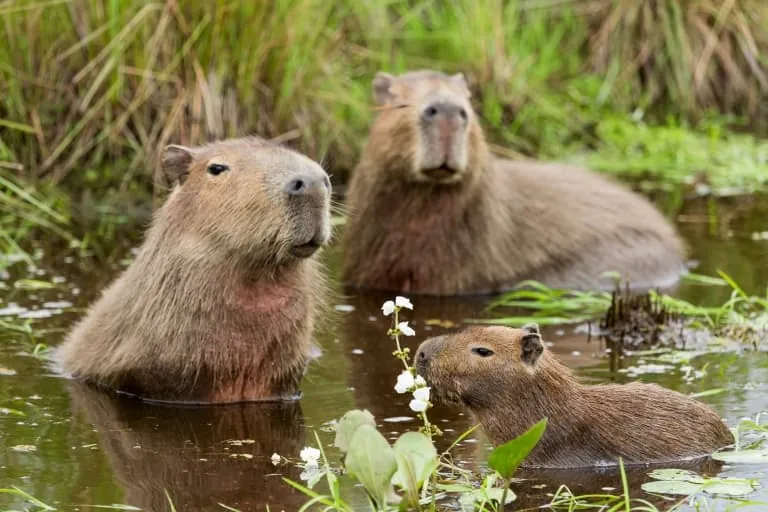
Capybaras aren’t just cute; they’re key players in their habitats. Their grazing habits, social behaviors, and interactions with predators all contribute to the ecological balance. Here’s how:
1. The Grass-Mowers of Wetlands
Capybaras eat a lot of grass. And I mean a lot. Their constant grazing:
- Prevents overgrowth of vegetation.
- Supports biodiversity by allowing smaller plants to grow.
- Creates open areas that other animals use for nesting or foraging.
2. Food Source for Predators
In their native range, capybaras are prey for:
- Jaguars
- Anacondas
- Caimans
- Harpy eagles
Their abundance ensures predators have a stable food source, helping to maintain the predator-prey balance.
3. Symbiotic Relationships
Ever seen a bird perched on a capybara? That’s no coincidence. Birds like caracaras and cattle egrets eat ticks and parasites off capybaras, benefiting both species.
Do Capybaras Endanger Other Animals?
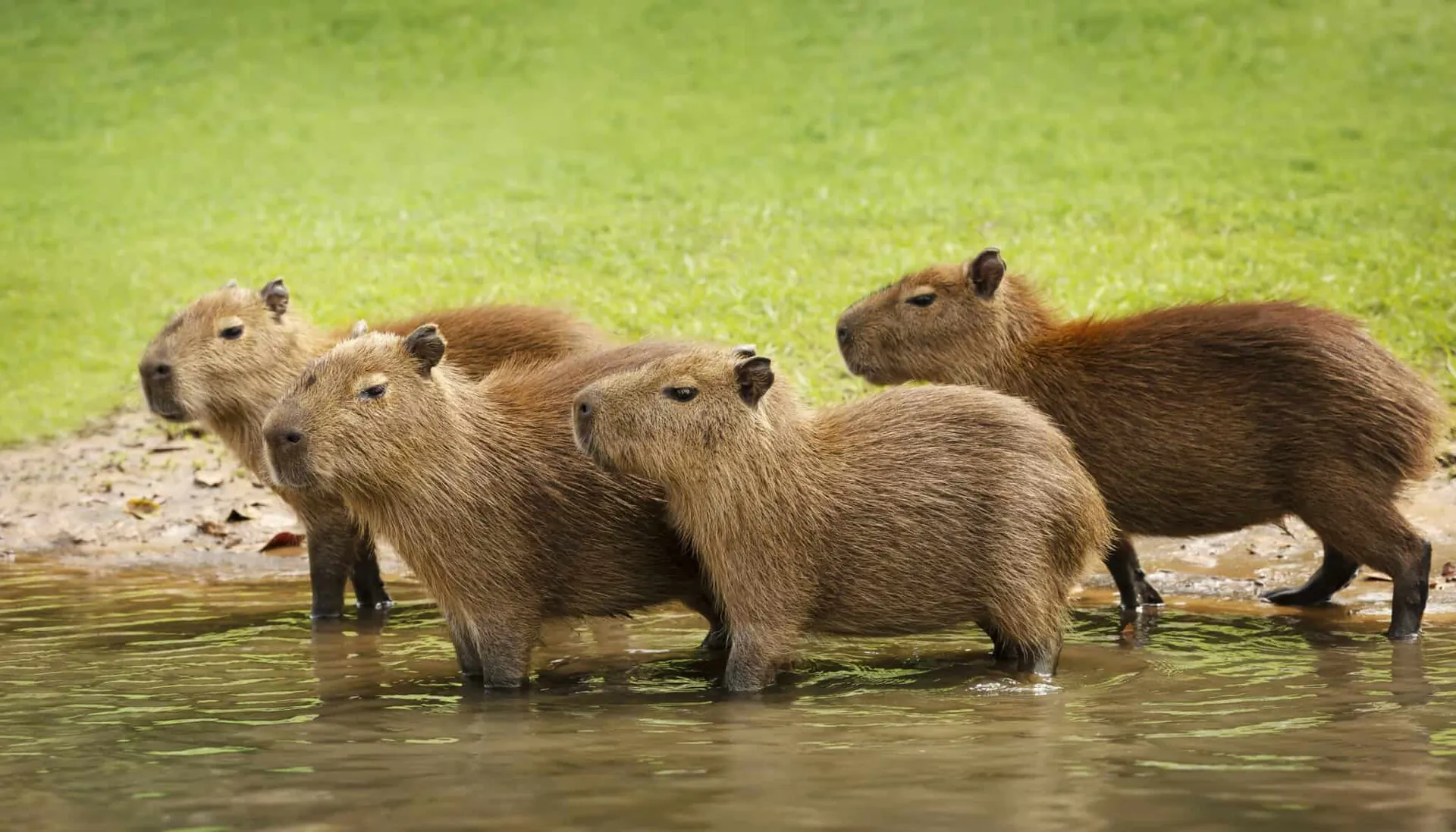
Now, let’s tackle the big question: Are capybaras a threat to other animals? The short answer is: not really, but it depends on the context. Let me explain.
In Their Native Habitat
In South America, capybaras’ behavior generally supports the ecosystem. They coexist peacefully with:
- Other herbivores: Since capybaras primarily eat grasses, they don’t compete much with other plant-eaters like deer or peccaries.
- Smaller animals: Their grazing opens up habitats for smaller species, benefiting biodiversity.
As Invasive Species
When capybaras are introduced to non-native areas, things can get tricky. For example:
- Resource Competition: In regions where food is limited, capybaras might outcompete local herbivores.
- Habitat Alteration: Overgrazing by capybaras in non-native ecosystems can lead to soil erosion and habitat degradation.
Real-World Example
In Florida, escaped capybaras have established small populations. While they’re not causing major harm yet, conservationists keep a close eye on them to prevent potential ecological disruptions.
Capybaras and Biodiversity
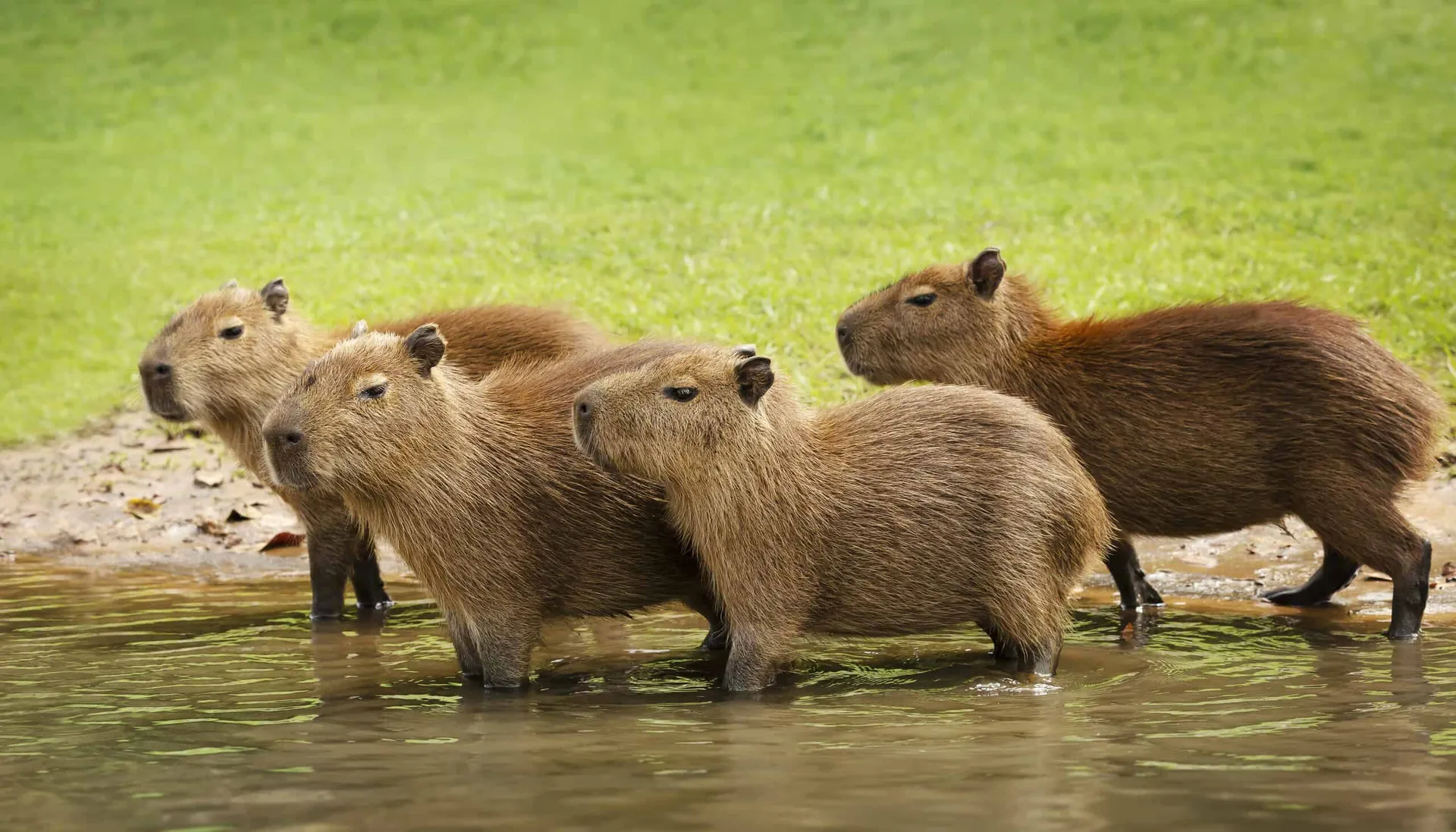
Far from being a danger, capybaras often enhance biodiversity. Here’s how:
1. Seed Dispersal
Capybaras’ droppings are full of seeds, which they spread across their habitats, helping plants grow in new areas.
2. Creating Microhabitats
By grazing and trampling vegetation, capybaras create spaces for:
- Ground-dwelling birds to nest.
- Smaller mammals to forage.
Frequently Asked Questions (FAQs)
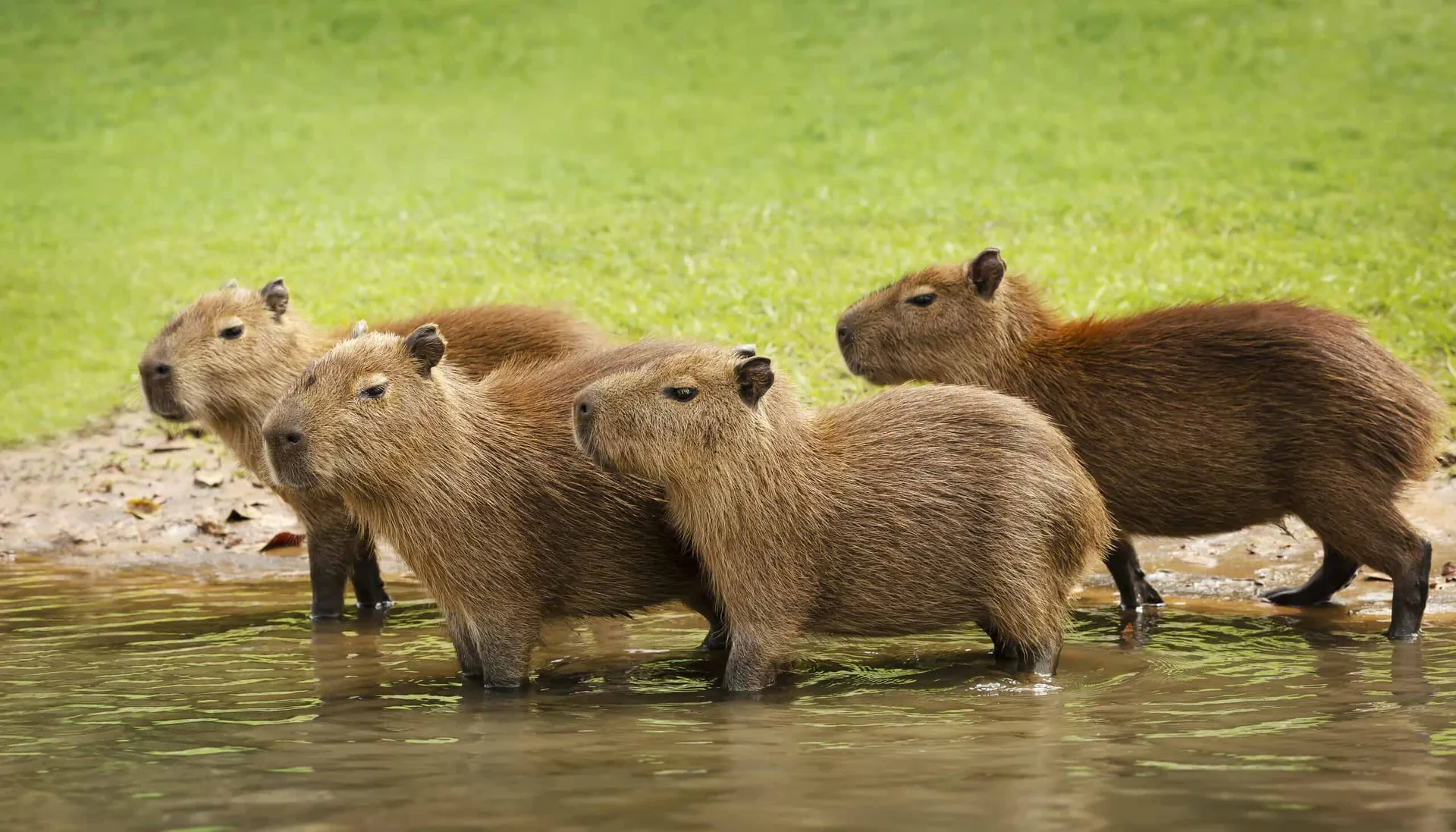
Do capybaras attack other animals?
No, capybaras are gentle giants. They rarely show aggression, even when threatened.
Can capybaras harm the environment?
In their native range, capybaras’ impact is overwhelmingly positive. However, in non-native regions, they can cause problems like overgrazing or competition for resources.
What animals benefit from capybaras?
Birds, small mammals, and even predators benefit from capybaras. They’re like ecosystem multitaskers, contributing to biodiversity and balance.
Final Thoughts
So, do capybaras endanger other animals? Not really. In fact, they’re often a boon to their ecosystems, supporting biodiversity and maintaining balance. But, like any species, their impact depends on the environment.
If you’re ever lucky enough to spot one of these adorable rodents, take a moment to appreciate their role in nature. Capybaras are more than just internet-famous animals—they’re key players in the ecosystems they call home.
